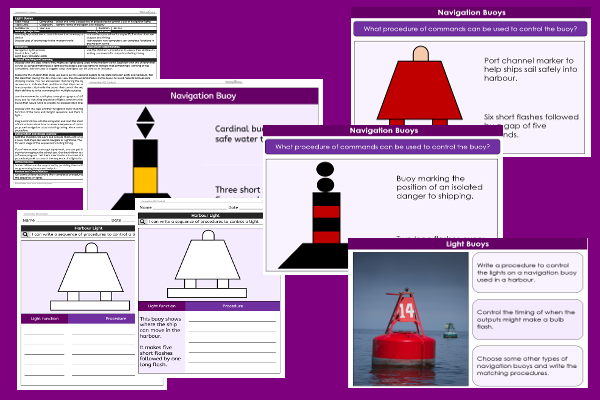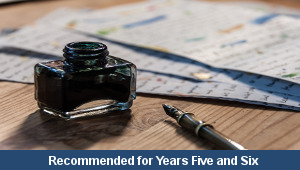Lesson Four – Light Buoys

This computing teaching pack for Key Stage Two gets the children to select and write a sequence of procedures to control a set of navigation lights for ships and boats to use when moving about a harbour location.
The class can identify the correct commands that can be used to control the timing of lights to match the required sequence for one type of buoy and the correct timing of light flashes.
Download this teaching pack including a lesson plan, classroom activities and an interactive presentation to select and write a sequence of procedures to control a set of navigation lights for ships and boats to use when moving about a harbour location
Activities in this teaching pack include display posters to identify and describe the sequence of lights used to indicate hazards and safe routes for shipping and differentiated templates to select and record the sequence of outputs for a navigation buoy to indicate a hazard or safe route for shipping.
The interactive presentation gets the children to explore how to write a sequence of procedures to control a set of navigation lights for ships and boats to use.
This lesson is part of a computing scheme of work to get the children to practise selecting and entering commands to control different procedures and outcomes to match specific functions when using light. There are teaching activities for shared learning, differentiated worksheets to support independent learning and interactive presentations to introduce concepts and key skills.
-

Maths Arithmetic Assessment
Assess abilities in solving arithmetic number problems for addition, subtraction, multiplication and division when working with informal and formal written calculations
-

Environment
Identify and describe some of the special landscapes and locations that can be found in the world and reflect on how they can be protected and preserved for the future
-

Silent Letter Words
Explore and illustrate the meanings and spellings of some different words with silent letters when using them in a range of topics and scenarios
-

Complaint Letters
Explain and model how to format and structure writing when composing letters of complaint about different issues and scenarios
